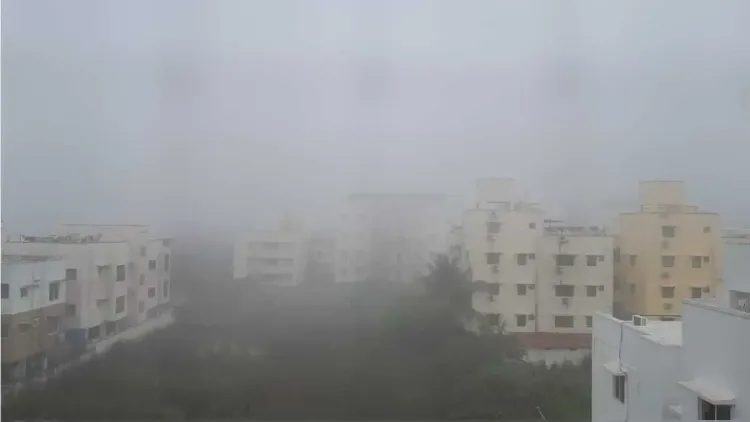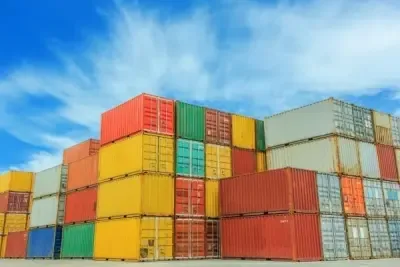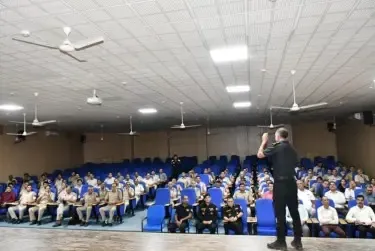Did Chennai Experience Increased Air Pollution After Diwali Fireworks?

Synopsis
Key Takeaways
- Air Quality Index rose sharply post-Diwali.
- Perungudi recorded the highest AQI at 217.
- Pollution levels are lower than previous years.
- Cleanup operations removed 60 metric tonnes of waste.
- Emergency calls surged by 61 percent during celebrations.
Chennai, Oct 21 (NationPress) The city experienced a significant increase in air pollution levels after the festive Diwali celebrations, marked by the continuous sounds of firecrackers throughout the capital. According to the Tamil Nadu Pollution Control Board (TNPCB), the average Air Quality Index (AQI) in Chennai surged to 154 by Tuesday morning, a stark rise from 80 the previous evening. The Perungudi area recorded the highest AQI at 217, while Manali and Velachery each had an AQI of 151, followed by Arumbakkam at 145 and Alandur at 128.
Officials noted that despite this spike, pollution levels this year were notably lower than during the 2024 Diwali celebrations, when the highest AQI reached 287 in Valasaravakkam, with the lowest at 150 in Thiruvottiyur.
The reduction in pollution was attributed to intermittent rain showers in Chennai during the festival, which effectively minimized suspended particulate matter in the atmosphere.
As the city dealt with temporary haze and smog, the Greater Chennai Corporation (GCC) initiated cleanup operations post-festival. By 6 p.m. on Monday, approximately 60 metric tonnes of firecracker waste were removed from various locations in the city, with the Alandur zone accounting for the highest amount at 6.89 metric tonnes, followed by Perungudi with 6.03 metric tonnes.
In total, over 6,000 sanitation workers were mobilized overnight to clear firecracker debris and segregate waste. The collected materials were transported to waste management facilities in Gummidipoondi, Kodungaiyur, and Perungudi.
Authorities have urged residents to assist by separately handing over firecracker waste to sanitation personnel for proper disposal.
On another note, the state's 108 emergency ambulance service reported a 61 percent increase in calls compared to regular days, receiving a total of 4,635 calls statewide until 6 p.m. on Monday, including 135 cases of burn injuries from firecracker-related incidents.
Throughout Tamil Nadu, Diwali was celebrated with great enthusiasm, as people donned new attire, exchanged sweets, and illuminated their homes.
Despite occasional rain, the festive atmosphere remained vibrant, with celebrations extending late into the night, marking a lively yet smoky conclusion to one of the state's most cherished festivals.









